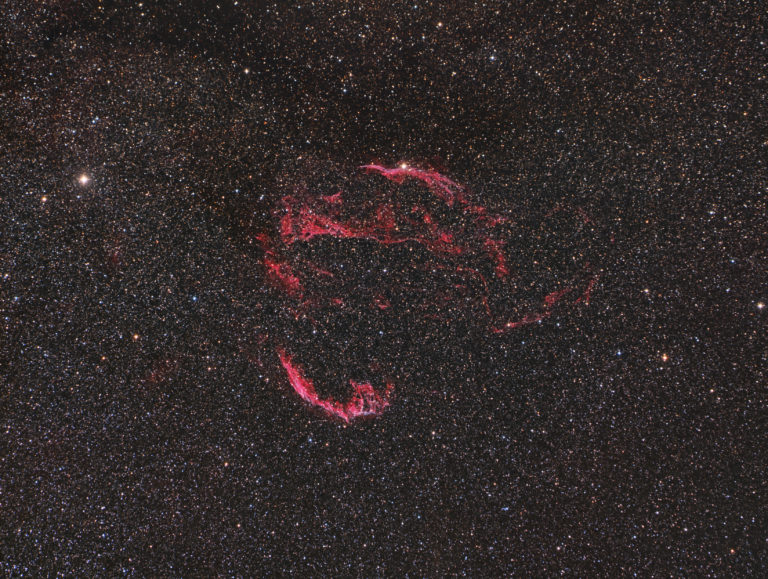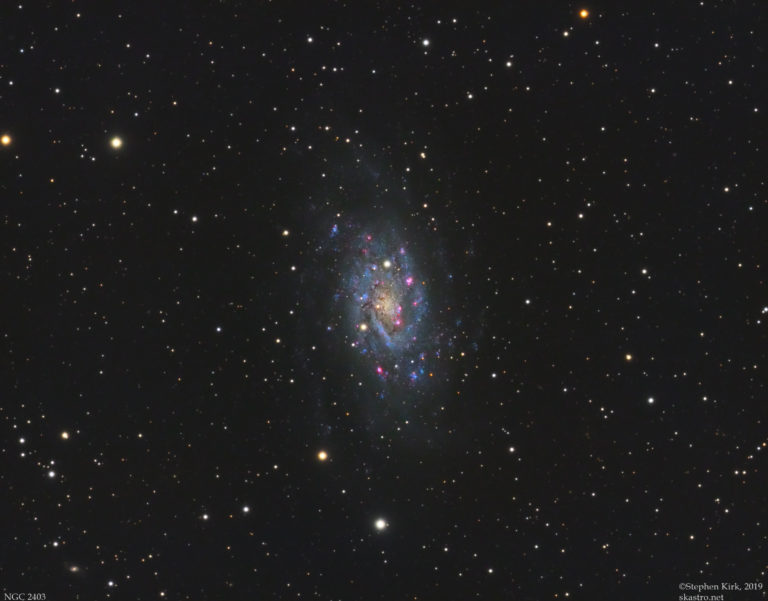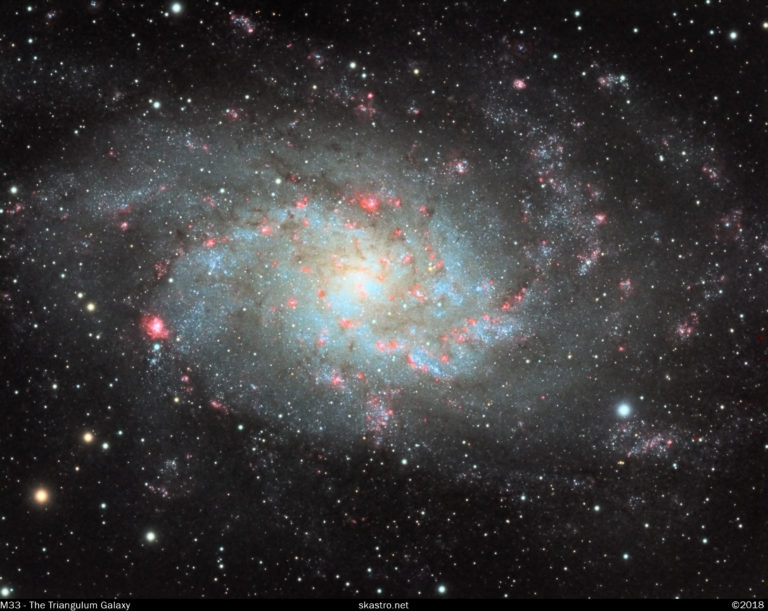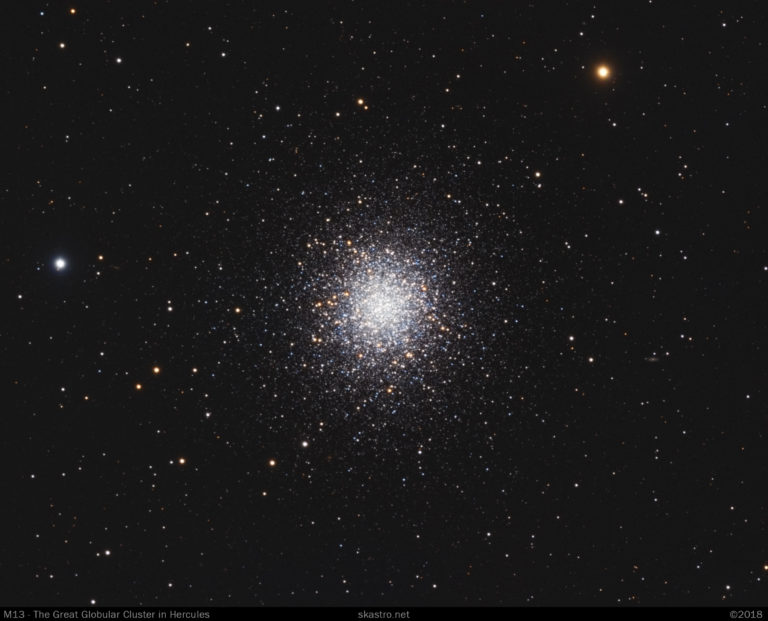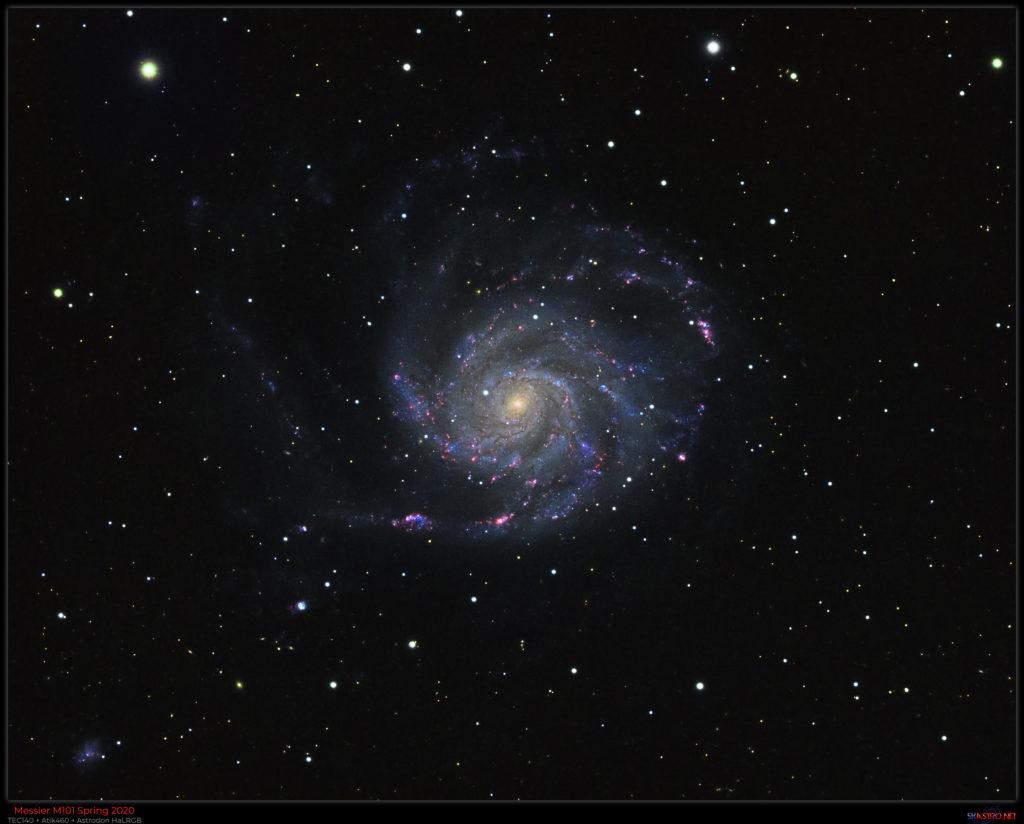The Veil Nebula in Cygnus is the remnant of a supernova of a star about 20 times the mass of the sun that exploded about 20000 years ago. The nebula is a huge, very faint and diffuse object, about six moon widths in diameter and is located about 2500 light years away. Very few telescopes can capture the entire Veil Nebula complex due to the huge angular size that it presents on the sky and creating a multi-frame mosaic is a very time consuming process, especially in the UK where clear nights are such a rare and premium time. This makes DSLR lenses ideal and few are better or as cost effective as the Samyang 135mm that was used to capture this image. The Veil Nebula in HaRGB Image Technical Details The image was captured from my backyard in Nottingham in the UK on the nights of the 13th and…
NGC 2403 is a spiral galaxy located about eight million light years away in the constellation of Camelopardalis in the Northern hemisphere. It is an outlying member of the M81/M82 group. You will note that it bares a striking resemblance to M33 and contains huge HII star forming regions. NGC2403 is much smaller than our own galaxy, being only about 50000 light years in diameter as opposed to about 120000 light years for our own Milky Way galaxy. It is not known why a smaller galaxy like this should have such huge HII regions that dwarf those of our own, larger galaxy. NGC 2403 Image Technical Data Imaged from my backyard, March 2019, in Nottingham, UK. I used my TEC 140 refractor with Atik 460 CCD camera and Astrodon LRGB filters. Image acquisition data, everything binned 1×1 Luminance 29 x 600s; Red 12 x 300s; Green 12 x 300s; Blue 12…
I have completed several images of the famous Triangulum Galaxy – M33, over the years. This is one of the most photographed objects in the sky and with good reason; it is a beautiful face on spiral galaxy that is the second closest major galaxy after Andromeda. It is bright and colourful and responds well to all types of imaging, whether with a DSLR or CCD, camera lens or telescope. It is probably the second “go to” target to photograph for astro photography beginners after the Andromeda galaxy. The image below is a version captured with the TEC 140 refractor and Atik 460 CCD camera and is the total of about 12 hours of LRGBHa data captured from my backyard observatory in Nottingham, UK in 2018. You can see it fills the frame very nicely. M33 The Triangulum Galaxy M33 Annotated M33 Inverted Image Technical Data Image acquired spring 2018…
M13 is arguably the greatest of the Northern hemisphere globular clusters and, after Omega Centauri, the greatest globular cluster in the sky. It is a located about 26000 light years away and has a diameter of about 120 light years. It is one of about 250 globular clusters that surround the nucleus of our galaxy. Most galaxies have globular clusters in orbit around them and the reason why is still unclear. What is clear is that the clusters and the stars within them are extremely old, in the region of ten billion years old or twice the age of the sun. M13 is visible with the naked eye on a dark night as a fuzzy star. A telescope reveals its starry nature and a scope over 8 inches will show many stars and is an amazing site to behold. M13 – The Great Globular Cluster in Hercules The above image…
M101 completed LRGBHa Image M101 – The Pinwheel Galaxy – is a spectacular, face-on “Grand Design” spiral galaxy located about 20 million light years away. It is quite a hard object to observe visually unless your skies are dark due to the galaxy’s very low surface brightness. In the image below you can see the many red HII (pronounced “H-two”) star forming regions. The galaxy is not a part of the local group of galaxies and is receding away from us with the expansion of the universe. The Spectacular M101 Spiral Galaxy in Ursa Major The image was acquired in my back yard observatory in Nottingham, UK with my TEC140 refractor and Atik 460 CCD camera with LRGBHa Astrodon Filters between 2018 and 2020. I used off-axis guiding to keep the telescope precisely aligned and the whole imaging ensemble was atop my MESU200 mount. M101 is not easily captured from…

